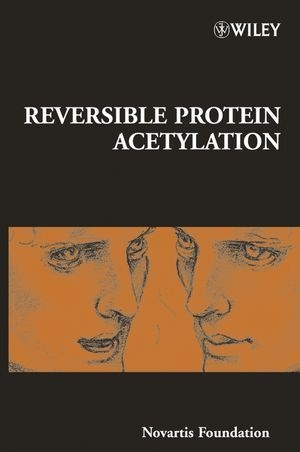Read more
Informationen zum Autor The Novartis Foundation is an international scientific and educational charity which promotes the study and general knowledge of science and in particular encourages international co-operation in scientific research. Klappentext The reversible acetylation of lysine residues on histone proteins has emerged as a major factor in the regulation of transcription in eukaryotes. All core histone proteins are acetylated and unique functional chromosomal domains are characterized by specific patterns of acetylation within their histone proteins. Functional correlations have been established between the level of acetylation of individual genes and their transcriptional activity. These complex signals are currently being elucidated in the context of the 'histone code hypothesis'. This model posits that distinct acetylation patterns in histones, along with other post-translational modifications, serve as specific signals recognized by the nuclear transcriptional machinery.Histone acetylation is under the control of competing histone acetyltransferases (HATs) and histone deacetylases (HDACs). Both enzyme families contain many members: at least 18 distinct human HDACs have been identified. As well as regulating transcription, these proteins play critical roles in cell cycle control and differentiation. Acetylation is not restricted to histone proteins; a growing number of important biological functions appear to be regulated via acetylation. These include DNA binding (p53), nuclear-cytoplasmic shuttling (NF-kB) and coactivator recruitment (HIV Tat protein).This novel research opens up new and exciting possibilities for drug design. Inhibitors have been developed that specifically target either HDACs or HATs. HDAC inhibitors exhibit selective toxicity towards tumour cells and are being developed as potential anticancer drugs. This book describes current knowledge of acetylation and features extensive discussions amongst the world's experts in this field, with an emphasis on major unanswered questions. Zusammenfassung A comprehensive review of recent work on chromatin and non-histone proteins, this book arises from the interactions of a multidisciplinary group of scientists involved in the study of acetylation. Inhaltsverzeichnis Chair's Introduction (E. Verdin). Beyond the double helix: writing and reading the histone code (Y. Wang, et al.). The indexing potential of histone lysine methylation (G. Schotta, et al.) A model for step-wise assembly of heterochromatin in yeast (D. Moazed, et al.). H2B Ubiquitylation and deubiquitylation in gene activation (A. Wyce, et al.). Structural and chemical basis of histone acetylation (R. Marmorstein). Phosphorylation and acetylation of histone H3 at inducible genes: two controversies revisted (L. Mahadevan, et al.). HDAC7 regulates apoptosis in developing thymocytes (E. Verdin, et al.). Dual roles of histone deacetylases in the control of cardiac growth (T. McKinsey and E. Olson). Chromatin modifications as clues to the regulation of antigen receptor assembly (D. Ciccone and M. Oettinger). General discussion I Histone modifications in X inactivation. The HDAC complex and cytoskeleton (J. Kovacs, et al.). Tat acetylation: a regulatory switch between early and late phases in HIV transcription elongation (M. Ott, et al.). Dynamics of the p53 acetylation pathway (W. Gu, et al.). Regulation of the NF-kB action by reversible acetylation (W. Greene and L. Chen). General discussion II p300 and DNA repair. Reversal of gene silencing as a therapeutic target for cancer - roles for DNA methylation and interdigitation with chromatin (S. Baylin). Transcription regulation by histone deacetylases (S. Wang, et al.). Molecular and cellular basis for the anti-proliferative effects of the HDAC inhibitor LAQ824 (P. Atadja, et al.).

